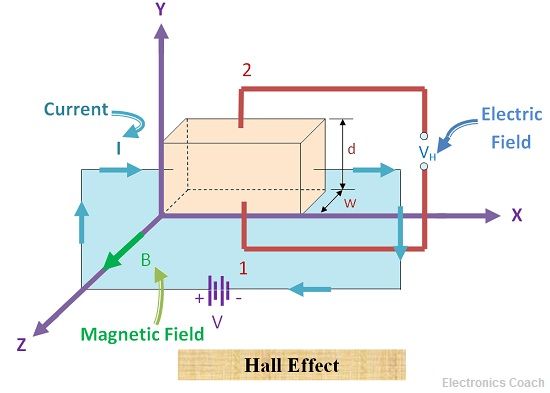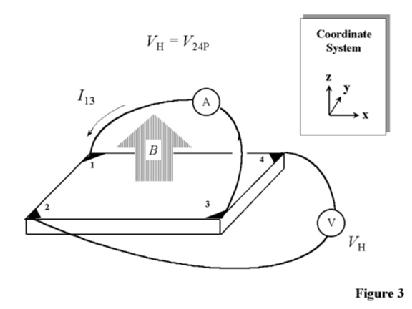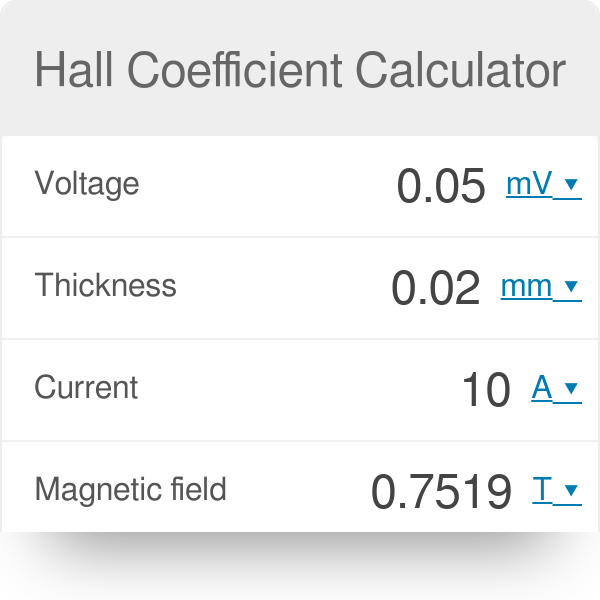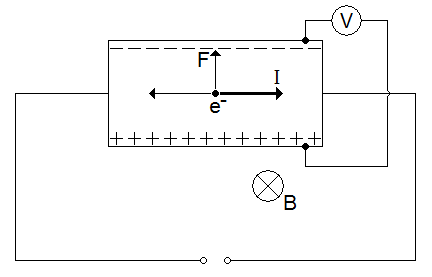Carrier concentration in hall effect formula
Carrier concentrations and mobilities for a sample can be determined from measurements of the Hall coefficient and resistivity as a function of temperature. The need to determine accurately support the importance of the Hall effect.

What Is Hall Effect Hall Angle Applications Of Hall Effect Electronics Coach
The area of the cross-section in the sample is A td.

. It is used for determining the. The carrier concentration P obtained from the Hall effect measurements were used to calculate the effective mass m of the carriers by using the. N n p n n.
Sec 3 nH - 1 R H x e cm-3 4. This angle is denoted by ⱷ H. The various applications of Hall Effect are as follows-To Determine Polarity.
E E H B e v e V H d B e v V H B v d at equilibrium force is downwards due to magnetic field which is equal to upward electric force. N BI dV e zx H. I -nevA ii Where n is number of electrons per unit volume and A is the area of cross-section of the conductor.
Applications of Hall Effect. Going back to the Hall effect if the current in the strip is I then from Current and Resistance we know that 1173 I n e v d A where n is the number of charge carriers per. Hall mobility µH and carrier concentration n H of charge carriers for each film was calculated using Hall coefficient RH as µH σ x R H cm 2 V.
The UV analysis revealed the maximum absorption peak in the visible region with increasing sulfur concentration and the measurement of the Hall effect affirmed p-type. We obtained a carrier concentration of 2 2510 410910 17 cm 3 using constant magnetic fields and 2 208 1 156 10 17 using constant currents which confirms a negative charge. For a given semiconductor the Hall field EH is proportional to the current density Jx and.
Department of Energys Office of Scientific and Technical Information. This is called Hall Angle. VH Hall voltage.
Giving carrier concentration n in terms of magnetic induction B current I Hall voltage V H and electronic charge e. Carrier concentrations nand p How do we measure n p μ n and μ p Through conductivity resistivity measurements. σ n 1ρ n neμ dont confuse ρ with p Generally.
Following is the derivation of the Hall-effect. T thickness w width. For semiconductor devices in addition to the semiconductors resistivity ρ and carrier mobility μ one of the most important adjustable properties is the carrier concentration np for.
From equations 36 and 37 for. Where n is free electron concentration substituting Equation 8117 in 8115 gives. If the magnetic field is applied along negative z-axis the Lorentz force moves the charge carriers say electrons toward the y-direction.
And the mobility of carriers in semiconductors. For an instrinsic semiconductor such as GaAs we know that n p n e n2 but it is not necessarily the case that p n which would imply zero. Is the total carrier concentration.

Carrier Mobility An Overview Sciencedirect Topics

Hall Resistance An Overview Sciencedirect Topics

Classical And Quantum Hall Effects Wolfram Demonstrations Project

Hall Effect Measurements

Hall Effect Coefficient An Overview Sciencedirect Topics
2

Hall Coefficient Calculator

Hall Effect An Overview Sciencedirect Topics

Hall Effect Sensor And How Magnets Make It Works
2

Hall Effect Experiment Ex 5560 Products Pasco

Hall Effect Measurements

Physicspaper Shared A Photo On Instagram The Hall Effect Dm Me For Private Tutoring Follow Physicspaper F Physics Notes Physics Memes Hall Effect

Hall Effect An Overview Sciencedirect Topics

Hall Effect Experiment Ex 5560 Products Pasco

Hall Effect Explained Electric Magnetic Field Drift Velocity Charge Density Calculations Youtube

Hall Effect Applications Of Hall Effect Electrical4u